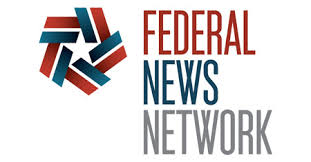USPS forecasts push back timeline of when it expects to run out of cash

The Postal Service expects to withstand the financial impact of the coronavirus impact better than it anticipated a few months ago, but warns that it could still run out of cash before the end of 2021 without long-term reform from Congress.
In recent briefings with mailing associations and congressional oversight committees Postal Service executives presented two likely scenarios for the agency’s short-term financial outlook.
USPS now estimates it will run out of cash in April 2021, if package volumes return to pre-COVID levels. If, however, package volume stay 15% above pre-COVID levels, the agency says it would run out of cash in October 2021.
USPS delivered the updated forecasts after Senate Homeland Security and Governmental Affairs Committee Chairman Ron Johnson (R-Wis.), House Oversight, Reform Committee Ranking Member Jim Jordan (R-Ohio), and Rep. Jody Hice (R-Ga.) asked the agency to reassess their financial projections earlier this month.
Former Postmaster General Megan Brennan in April requested a $75 billion relief package from members of the House Oversight and Reform Committee that based on the agency’s earlier forecasts.
The USPS Board of Governors, which now consists entirely of Trump administration appointees, approved the $75 billion request, which would include emergency appropriations, an added line of credit from the Treasury Department and funding for “shovel-ready” projects to modernize the agency’s aging vehicle fleet and facilities.
Despite these less severe financial predictions, USPS senior financial executives said in these briefings “It’s a question of when, not if, we will run out of cash.”
Read more: Management News
Postal officials said the agency’s financial forecast from April included only three weeks of pandemic data. They also highlighted the challenges of USPS or other entities getting an accurate read on future business trends because of the unpredictable nature of the pandemic.
Finance and Strategy Senior Vice President Luke Grossman said the mail volume declines have held at 25-to-30% while package volume has generally been 60% higher than pre-pandemic levels.
If package volume returns to pre-coronavirus levels, USPS estimates it will see $17 billion in pandemic-related losses between this year and next year. Under this model, USPS expects to see $50 billion in pandemic-related losses over the next decade.
If package stay 15% above pre-coronavirus levels, USPS would see its 2020-2021 losses drop to $7 billion, and its decline for the next decade drop would fall to $17.3 billion.
Neither forecast considers the $10 billion loan guaranteed by the CARES Act. Officials from the Postal Service and Treasury Department have negotiated over the terms of the loan, but haven’t reached a deal yet.
President Donald Trump has warned his administration won’t give USPS the loan until it agrees to at least quadruple package rates for e-commerce giants such as Amazon.
Meanwhile, Treasury Secretary Steven Mnuchin said earlier this month that the Postal Service might not even need the $10 billion because of its surge in package revenue.
Chief Financial Officer Joe Corbett said the Postal Service will need Congress to pass long-term postal reform legislation to put the agency on firmer financial footing.
The Postal Service’s ability to forecast its losses during the pandemic also came up during a confirmation hearing for the two newest members of the USPS Board of Governors, Bill Zollars and Donald Lee Moak.
Moak told members of the Senate Homeland Security and Governmental Affairs Committee that the Postal Service requires better real-time data to make more accurate business forecasts.
“What we need here in this situation with USPS is we need to get good data in a timely fashion so that the Congress, the Board of Governors and USPS management can make timely decisions and adjust quickly when need be,” he said.
Stephen Kearney, the executive director of the Alliance of Nonprofit Mailers, told Federal News Network that the updated USPS forecast would probably relieve some industry concerns about the Postal Service running out of money in the near-term.
“I’ve been trying to reassure them it’s not going to happen. So it has caused somewhat of a disruption in the non-profit industry at a time when other forms of fundraising and communications have been put on hold because of the pandemic,” Kearney said.
USPS spokesman Dave Partenheimer confirmed the Postal Service has updated its forecast scenarios concerning the impact of the COVID-19 pandemic on Postal Service finances “to reflect our actual revenue and volume performance during the pandemic to date.”
“Thus far, mail volume has drastically declined, but not as significantly as we originally predicted based upon the data we had from the first three weeks of the pandemic, and package volume has been growing exponentially,” he said.
While recent trends suggest the agency will perform better in 2020 than what it had predicted, Partenheimer said the pandemic “will nevertheless have an extremely detrimental impact on the financial condition of the Postal Service.”
Rep. Gerry Connolly (D-Va.), chairman of the House Oversight and Reform Committee’s subcommittee on government operations, said package delivery has accounted for about 30% of USPS revenue for the past few years, while mail volume during the pandemic has declined by 30%.
“Package delivery volumes are falling, and even continued record-breaking package delivery volumes will not save the Postal Service long term,” Connolly said. “Even worse, the president’s simple and wrong answer to raise prices on customers shipping packages would accelerate the Postal Service’s financial crisis.”
Linn’s Stamp News first reported this story Thursday.


Leave a Reply